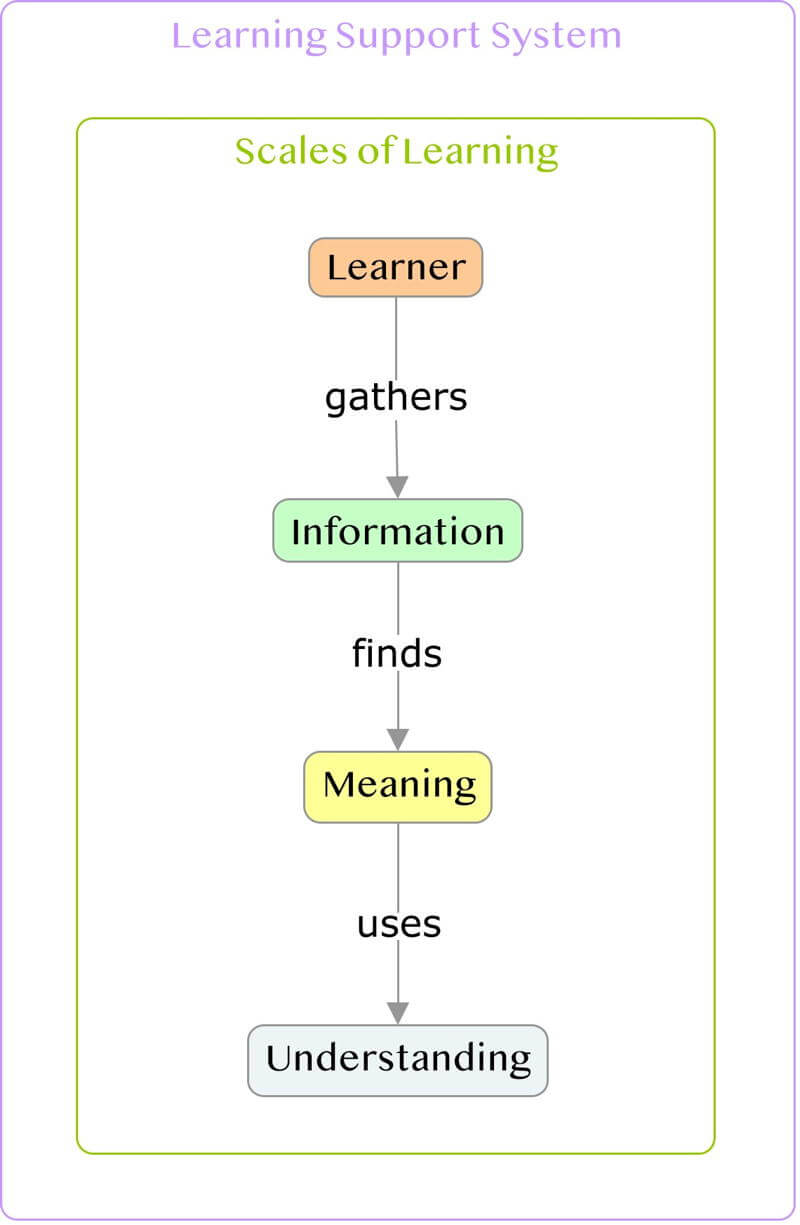Learning
It’s complicated.
Learning has a variety of definitions, illustrating how complex it is and how personal it is. Click on the highlighted link, and see which fits your learning process.
The Learning Process
The essence of the learning process is that
- a person gathers information,
- finds meaning within it, then
- uses their understanding for a purpose vital to them.
What makes learning complicated is that each component and action has a range of methods associated with it, and the scales of learning and its support system are massive.
As soon as a baby is born, they begin learning how to decipher sounds into language, how their limbs work, the shapes and colors of their world to recognize people, etc. Through repetition, trial and error, and a learning support system, babies learn a range of skills and knowledge that allow the development of more advanced skills and understanding. Learning future skills depends on mastering more fundamental skills, so how well we succeed depends on how well we’ve been doing.

Information comes in many forms
- Spoken language
- Written language
- Acted performances
- Music
- Movement
- Games
- Numbers, calculations, and data
- Experiments and models
- Art
- Pictures and graphics
- Interactions with People, Self, and Nature
The skills to work with each form of information have to be learned. Think about how you learned your first language! And none of us is adept at processing information in all of these forms, which is why you explore which types of intelligence are natural to you at the beginning of the Learning mini-course.
Ways to Find Meaning within the Information
- Recognize the patterns to decipher
- Prioritize
- Contextualize
- Question/Interrogate the quality of the information
- Categorize Importance
- Integrate and organize with prior information/knowledge
- Extend meaning through reasoning and logic
- Reasoning: Using existing knowledge to conclude, make predictions, or construct explanations.
- Deduction: testing the validity of a generalization by applying it to specific incidents
- Induction: making generalizations based on specific details.
- Abduction: Use an incomplete set of observations and propose the likeliest possible explanation for the set.
- Abstraction: derive general rules and concepts from the usage and classification of specific examples.
Ways to Use Understanding
- Answer a question
- Apply to a task or problem
- Create new information
- Teaching others
Although some of these activities are a form of imitation, such as taking a test, several of these processes involve creativity, so the range of possibilities is endless.
Scales of Learning
- One idea/concept/skill (for example, learning a letter in the alphabet)
- Single Activity
- Topic or multiple related activities
- Series of related topics
- Course
- Discipline
- Careers
The bottom line, there is an endless need to learn throughout one’s life.
Learning Support System
- People (Family, teacher, coach, mentor, tutor, boss, colleague/peer, etc.)
- Institutions (Schools, museums, sports teams and organizations, social clubs (scouts, outdoor clubs, hobbyists, etc.), theaters, dance studios, religious institutions, etc.
- Resources (Books/articles, videos/movies, games, songs, online tutorials, etc.)
- Culture and Society
Learning may happen anywhere at any time, so be mentally prepared when the opportunities arise.
Sabrina Sadique and John Pickle, teaching colleagues, discuss how the discipline one is learning creates a lens for how we explore our universal questions.
Apologies for the Zoom delays in the video – John hadn’t overcome his WiFi issues yet, but the message still comes through, just with some out of sync soundtrack in the video at times.
Why Focus on Reading, Writing, and Images?
We will focus on the primary mechanisms that deliver most of our information for learning: written language, spoken language, and images. Plus, creating written, spoken, and drawn materials provide an excellent way to learn, and they are an invaluable way to assess how your learning is progressing.

0 Comments